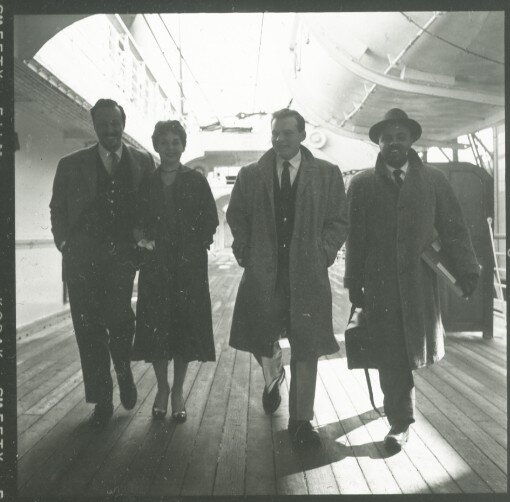
The Life & Work of Chuck Stewart
“It’s probably easier to ask me whom haven’t I photographed then to tell you who I have. But if there’s a historic moment in American music, social or cultural history that you’re curious about, chances are I was there or have photographs of somebody who was.”
— CHUCK STEWART
Chuck Stewart has been a professional cultural photographer for more than 70 years; an eyewitness to many great moments in 20th century history.
Chuck was born in Henrietta, Texas and raised in Tucson, AZ where his family moved to seek more opportunities. On his 13th birthday, his mother gave him a 616 Box-Brownie camera to try his hand at photography. The next day, the famed mezzo-soprano Marian Anderson visited his school in Tucson. He took pictures of the event and sold them to students and teachers and earned $2.00. This was a great financial leap from a 25-cents a week allowance. His career was born.
Chuck earned a Bachelors in Fine Arts degree in Photography from Ohio University during a time when it was rare, if not impossible, for African Americans to study fine arts at white institutions. There he met mentor and lifelong friend, photographer Herman Leonard.
As a military photographer, Chuck was the only African American cleared to shoot early tests of the nuclear bomb. He has early images of famous and emerging political leaders and heads of state from around the world.
He eventually joined Herman in NYC. Chuck did a lot of the grunt-work, where he learned to set up a shot, and understand what the photographer tries to translate to an audience.
Chuck worked the New York City music scene in the early fifties capturing notable jazz luminaries representing Latin jazz, big band, bebop, cool jazz, and more, as well as bands and vocalists representing rock n’ roll, rhythm and blues, pop, country, Broadway, film and television. Chucks archives contain 800,000 negatives with a large inventory being jazz musicians from the 50’s to late 90’s.
When the Beatles first toured America, Chuck toured with them but asked to be reassigned after being pinched and poked too many times by fans. “There are no black Beatles. Why are you grabbing me?” I protested. ‘You’re with them and that’s good enough for us,’ fans retorted.
Chuck was the only photographer at the historic recording session of John Coltrane’s album “A Love Supreme.” Oddly, his photos weren’t used for the album cover. However rare and unseen photos from that session now reside in the jazz archives of the Smithsonian Institution for anyone to see. Majority of the images used in the John Coltrane’s “Chasing Trane” Documentary and James Brown HBO Documentary are Chucks.
Chuck’s photographs have illustrated more than 2,000 album covers and liner pages for some of the nation’s leading and niche record labels. Chucks photographs have been in Motion Pictures, TV shows over 50 documentaries, Publications national and international. There has been a growing demand for Chuck’s images to be shown in text books at Stanford University, Oxford University and Cambridge University to name a few. His jazz images appear in over 100 jazz books in many nations around the world and translated in over 20 languages.
Fun Facts
First Camera
Chuck’s first camera was a Kodak Brownie Six-16 that he got when he was 13 years old.
Marian Anderson
The first subject Chuck shot was renown opera singer, Marian Anderson, at his middle school in Tuscon, AZ.
Chuck’s Mentor
His mentor and life long friend was the legendary Herman Leonard.
A Military Photographer
Chuck Stewart was a military photographer who shot the U.S’s 1952 nuclear testing.
Well Traveled
Chuck Stewart has traveled the world 3 times over.
Favorite Quote
“It’s the photographer’s eye that gives a picture soul and tells a story.”





